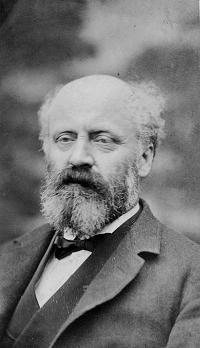James Wimshurst
| James Wimshurst | |
|---|---|
 |
|
| Born |
13 April 1832 Poplar, England |
| Died | 3 January 1903 (aged 70) Clapham, England |
| Parent(s) | Henry Wimshurst (father) |
| Engineering career | |
| Discipline | Shipwright, electrical engineer |
| Significant design | Wimshurst machine |
| Awards | Fellow of the Royal Society |
James Wimshurst (13 April 1832 – 3 January 1903) was an English inventor, engineer and shipwright. Though Wimshurst did not patent his machines and the various improvements that he made to them, his refinements to the electrostatic generator led to its becoming widely known as the Wimshurst machine.
Wimshurst was born in Poplar, England, and was the son of Henry Wimshurst, a shipbuilder of Ratcliffe Cross Dock. Wimshurst was educated at Steabonheath House in London and became an apprentice at the Thames Ironworks until 1853 with James Mare. In 1865, he married Clara Tribble. In 1865, after Wimshurst was transferred to Liverpool, he worked at the Liverpool Underwriters' Registry. In 1874, he joined the Board of Trade as a "chief shipwright surveyor" at Lloyds. Later, in 1890, he became the Board of Trade's representative at an international conference in Washington.
Wimshurst dedicated large amounts of his free time to experimental works. Besides his electrical activities, he invented a distinctive vacuum pump, a device to indicate ship stability and methods for electrically connecting lighthouses to the mainland. In 1878, he began to experiment with electrical influence machines for generating electrical sparks for scientific and entertainment purposes. Beginning in 1880, he became interested in electrostatic machines of the influence type. His house in Clapham, England, had a versatile workshop which had a wide variety of tools and devices for electric illumination. Wimshurst constructed several of the known types of electrostatic generators, such as those created by W. Nicholson, F. P. Carré and W. T. B. Holtz. To these predecessors, Wimshurst made many modifications with the result known as the Holtz-Wimshurst machine.
...
Wikipedia
